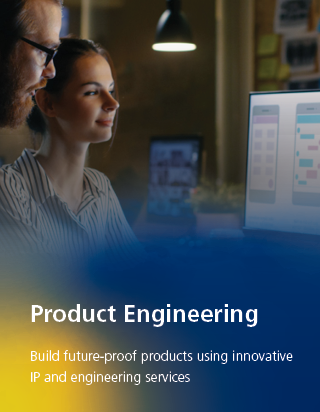Experience Seamless Project Implementation: Engineering Support for Laying Out Engineer Services, Topographical Surveying, and Extra
Experience Seamless Project Implementation: Engineering Support for Laying Out Engineer Services, Topographical Surveying, and Extra
Blog Article
Making The Most Of Source Allowance Via Strategic Surveying Practices
In the world of strategic resource allotment, the technique of checking stands as a pivotal tool for companies aiming to maximize their performance and impact. By systematically gathering understandings and information, calculated checking techniques provide a roadmap for informed decision-making and source circulation.
Value of Strategic Surveying Practices
Strategic evaluating techniques play a crucial role in establishing the effective appropriation of resources within organizations. By conducting strategic surveys, companies can gather useful information and understandings that aid in making educated decisions regarding the allotment of resources such as budget plan, time, and manpower. These methods offer an organized approach to comprehending the present state of the organization, determining locations for renovation, and straightening resources with critical objectives.
One crucial value of critical surveying techniques is that they assist companies prioritize their initiatives based upon real-time comments from stakeholders. This ensures that resources are routed in the direction of tasks or tasks that have the highest influence on achieving business objectives. In addition, strategic studies enable business to adjust to altering market problems, consumer choices, and interior capabilities by continuously keeping track of and reviewing resource appropriation strategies.
Event Insights From Stakeholders
Including feedback from stakeholders is essential for companies carrying out calculated checking practices to successfully allot sources and drive decision-making procedures. Stakeholders, including staff members, customers, distributors, and area participants, hold important insights that can considerably impact the success of critical efforts. Engineering surveys. Involving with stakeholders via studies, meetings, emphasis teams, and comments sessions enables organizations to gain a deeper understanding of their worries, choices, and demands
By collecting insights from stakeholders, companies can identify key locations for improvement, prioritize source appropriation based upon actual demands, and align critical objectives with stakeholder expectations. In addition, entailing stakeholders in the decision-making procedure cultivates a sense of possession and commitment, causing increased buy-in and assistance for calculated campaigns.
Additionally, stakeholders frequently supply distinct viewpoints and innovative concepts that may not have actually been considered internally. By actively listening to and integrating stakeholder feedback, companies can enhance their calculated surveying techniques, make even more informed decisions, and inevitably achieve far better results.
Utilizing Data-Driven Approaches
Utilizing data-driven methods is critical for organizations looking for to boost the performance of their resource allotment strategies and decision-making processes. By leveraging data analytics and progressed modern technologies, organizations can remove beneficial insights to enhance resource allotment, identify trends, and make informed choices. Data-driven approaches enable organizations to allocate sources based upon empirical proof instead of intuition, causing much more effective and efficient end results.

Moreover, companies can utilize predictive analytics to forecast future resource needs and assign sources proactively. construction surveys. By leveraging historical information and fad evaluation, organizations can expect demand changes and readjust their source allocation methods as necessary. On the whole, accepting data-driven methods encourages companies to make well-informed choices that optimize source allowance performance and drive lasting growth
Identifying Locations for Renovation
Identifying areas for improvement is an important action in the process of optimizing resource allocation. By acknowledging where ineffectiveness or bottlenecks exist within the organization, decision-makers can direct sources in the direction of attending to these details areas.
One effective technique for determining areas for renovation is performing regular performance analyses throughout various departments or functions. Through these examinations, companies can collect useful understandings into areas that require interest or restructuring. Additionally, looking for comments from employees at all degrees of the company can supply an unique point of view on potential locations for improvement.
Moreover, using tools such as procedure mapping, SWOT analysis, and benchmarking can assist in determining areas for enhancement by highlighting staminas, weaknesses, possibilities, and hazards within the organization. By methodically checking out these elements, companies can create a comprehensive understanding of additional resources where resources ought to be allocated to drive performance and performance.
Practical Tips for Implementation

Conclusion
In final thought, strategic surveying techniques play a vital role in maximizing source appropriation by gathering understandings from stakeholders, making use of data-driven techniques, and identifying locations for enhancement. Applying functional pointers for reliable surveying can result in more educated decision-making and optimized resource allowance approaches. By prioritizing calculated checking techniques, organizations can ensure that resources are allocated efficiently and properly to fulfill their goals and goals.
In the realm of critical resource appropriation, the method of surveying stands as a crucial tool for companies aiming to maximize their effectiveness and effect.Strategic evaluating techniques play a critical function in figuring out the efficient appropriation of resources within companies.Including responses from stakeholders is necessary for organizations executing critical surveying methods to successfully allocate sources and drive decision-making procedures.Moreover, companies can utilize predictive analytics to forecast future resource demands and allot sources proactively. By focusing on tactical checking methods, organizations can make sure that resources are designated efficiently and successfully to fulfill their goals and goals.
Report this page